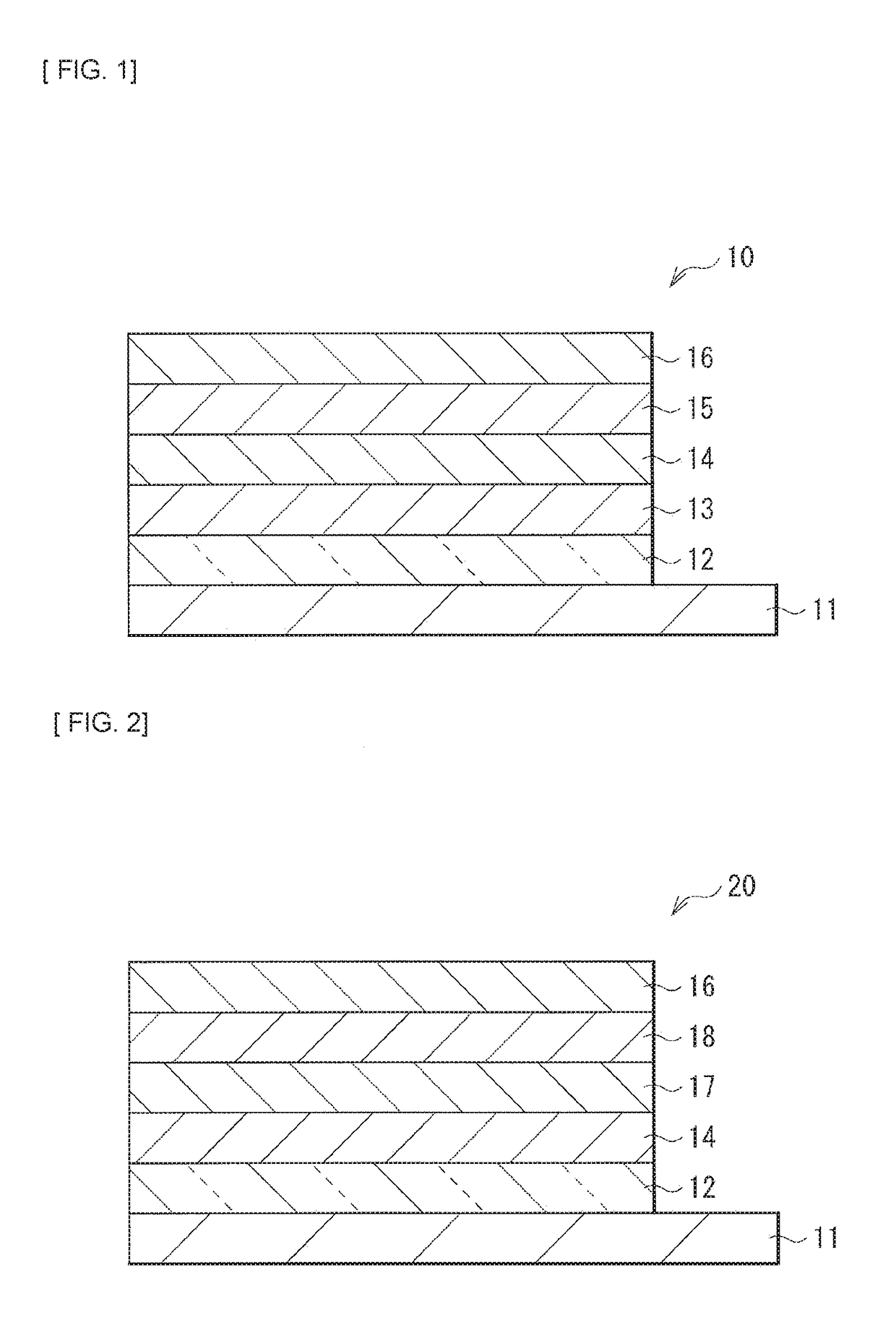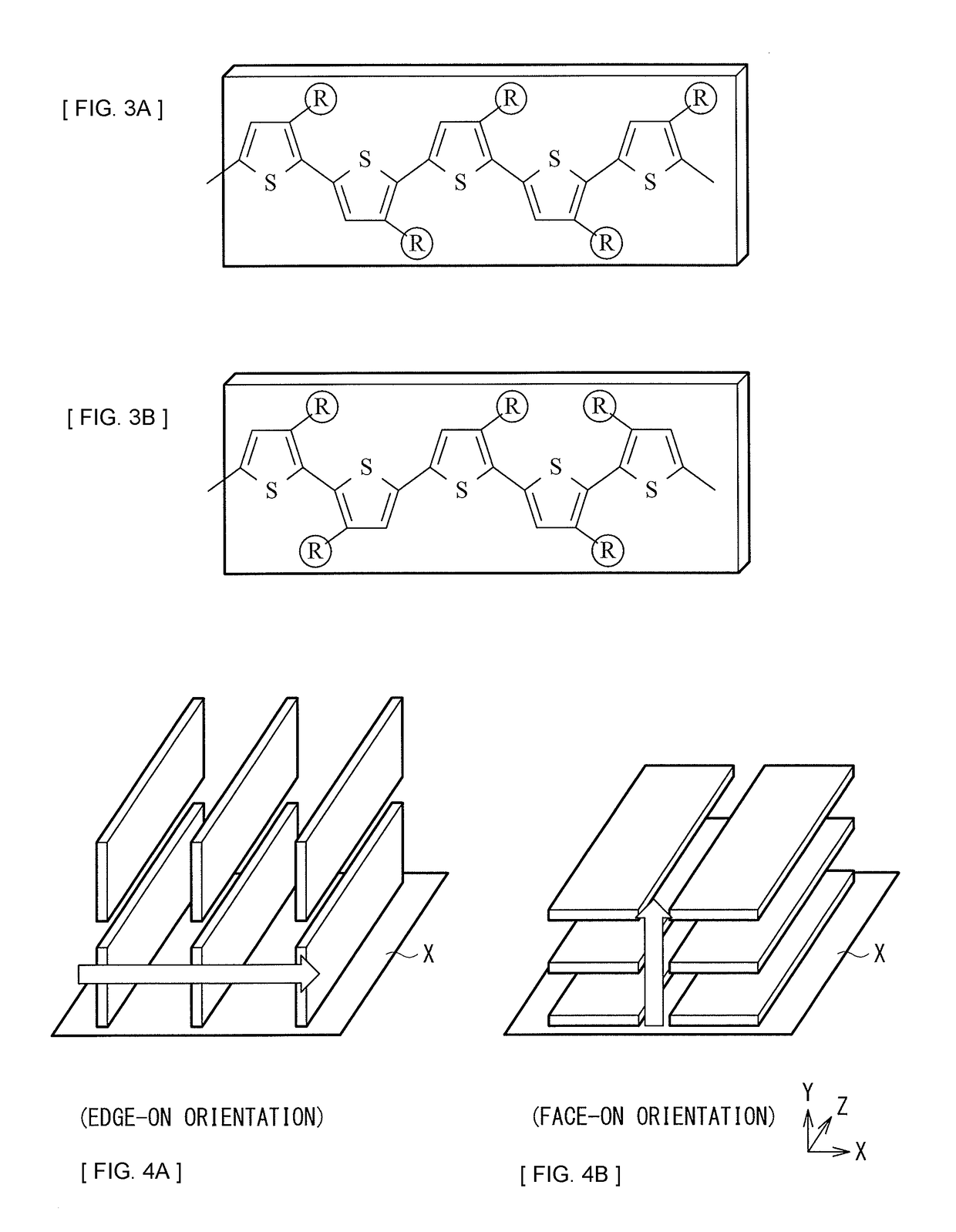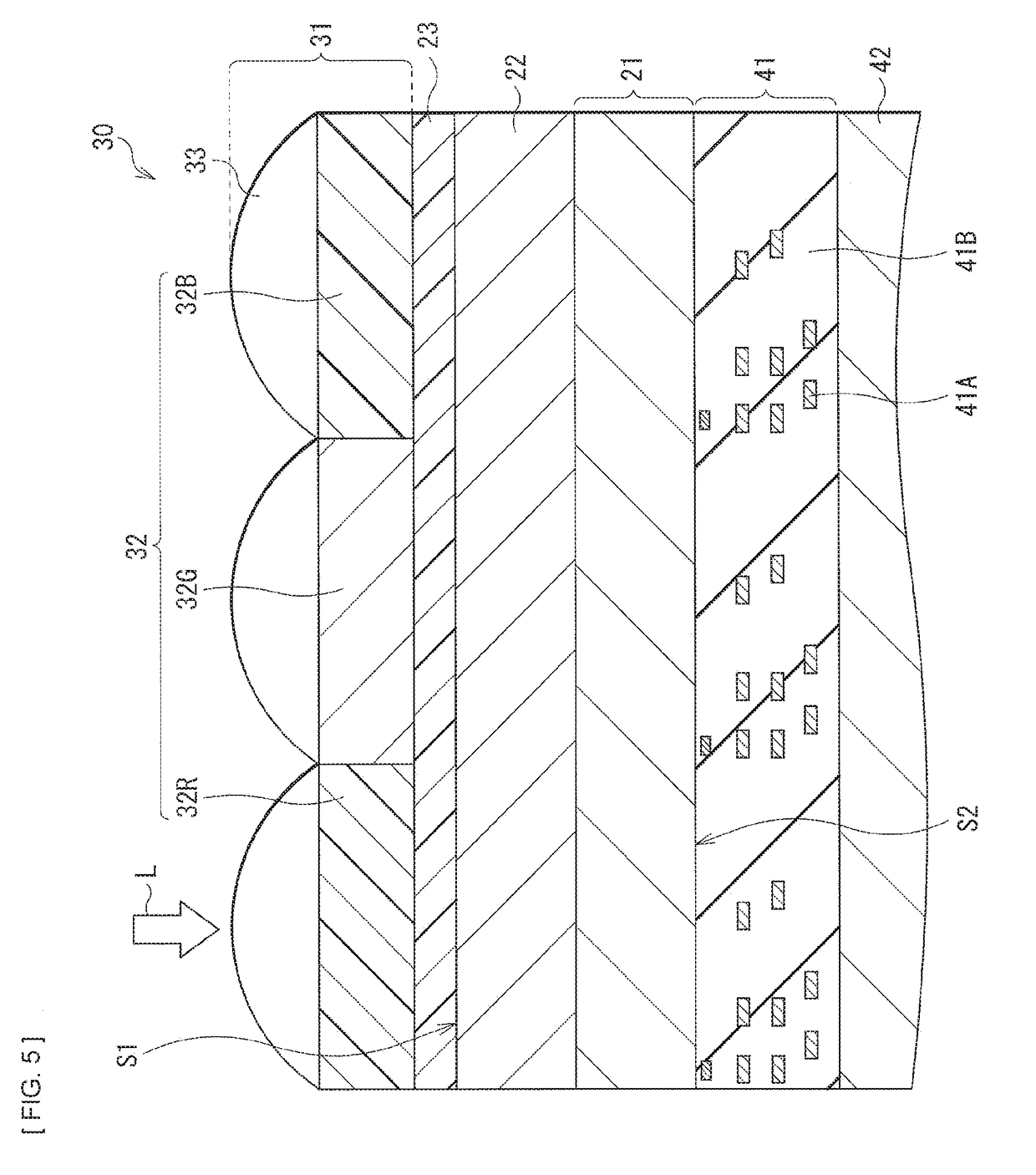Photoelectric conversion device and imaging unit
a conversion device and imaging unit technology, applied in the manufacture of final products, basic electric elements, radio-controlled devices, etc., can solve the problems of reducing the manufacturing yield, achieve high carrier mobility, improve device characteristics, and improve stereoregularity p3ht
- Summary
- Abstract
- Description
- Claims
- Application Information
AI Technical Summary
Benefits of technology
Problems solved by technology
Method used
Image
Examples
embodiment
1. EMBODIMENT
(1-1. Basic Configuration)
[0036]FIG. 1 illustrates an example of a cross-sectional configuration of a photoelectric conversion device (a photoelectric conversion device 10) according to a first embodiment of the present disclosure. The photoelectric conversion device 10 is applied to, for example, a solar battery (a solar battery 1, refer to FIG. 6). The photoelectric conversion device 10 has a configuration in which a transparent electrode 12, a hole transport layer 13, an organic photoelectric conversion layer 14, an electron transport layer 15, and a counter electrode 16 are stacked in this order on a substrate 11. In the photoelectric conversion device 10 according to the present embodiment, the organic photoelectric conversion layer 14 is formed including an organic semiconductor material (a first organic semiconductor material) having head (Head)-to-tail (Tail) coupling stereoregularity of 95% or more and an organic semiconductor material (a second organic semicon...
second embodiment
2. SECOND EMBODIMENT
[0077]FIG. 5 illustrates a cross-sectional configuration of a photoelectric conversion device (an imaging device 30) according to a second embodiment of the present disclosure. The imaging device 30 configures one pixel (for example, a pixel P) in, for example, an imaging unit (for example, an imaging unit 2) such as a Bayer arrangement type CCD image sensor or CMOS image sensor (both refer to FIG. 7). This imaging device 30 is of a back-side illumination type, and has a configuration in which a light concentration section 31 and a photoelectric converter 22 are provided on a side on which a light incident surface is located of a semiconductor substrate 21, and a multilayer wiring layer 41 is provided on a surface (a surface S2) opposite to a light reception surface (a surface S1).
[0078]In the imaging device 30, for example, the photoelectric converter 22 is provided on, for example, the semiconductor substrate 21. The photoelectric converter 22 according to the ...
application examples
3. APPLICATION EXAMPLES
Application Example 1
[0101]FIG. 6 illustrates a cross-sectional configuration of an organic solar battery module (a solar battery 1) using the photoelectric conversion device 10 (or the photoelectric conversion device 20) described in the foregoing first embodiment. In the solar battery 1, two photoelectric conversion devices 10 (10A and 10B) are disposed in a horizontal direction and the counter electrode 16 of the photoelectric conversion device 10A on the left side in the drawing and the transparent electrode 12 of the photoelectric conversion device 10B on the right side are serially coupled to each other, which makes it possible to construct a serially-structured organic solar battery module having a high electromotive force. In the present application example, the two photoelectric conversion devices 10A and 10B are serially coupled to each other; however, the serial connection number is not limited to two, and it is possible to increase the number as ap...
PUM
 Login to View More
Login to View More Abstract
Description
Claims
Application Information
 Login to View More
Login to View More - R&D
- Intellectual Property
- Life Sciences
- Materials
- Tech Scout
- Unparalleled Data Quality
- Higher Quality Content
- 60% Fewer Hallucinations
Browse by: Latest US Patents, China's latest patents, Technical Efficacy Thesaurus, Application Domain, Technology Topic, Popular Technical Reports.
© 2025 PatSnap. All rights reserved.Legal|Privacy policy|Modern Slavery Act Transparency Statement|Sitemap|About US| Contact US: help@patsnap.com



